#naval warfare
Text

The Death of Nelson by William Brassey Hole
#battle of trafalgar#horatio nelson#death#age of sail#art#william brassey hole#marine art#england#great britain#english#british#europe#history#warship#warships#naval battle#naval warfare#sea
34 notes
·
View notes
Text





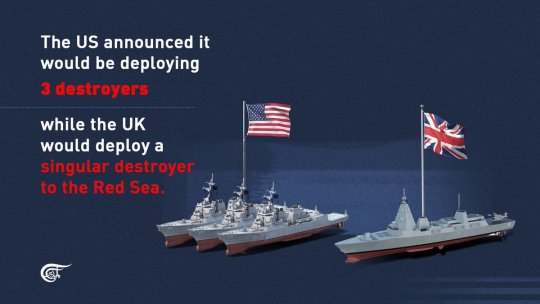


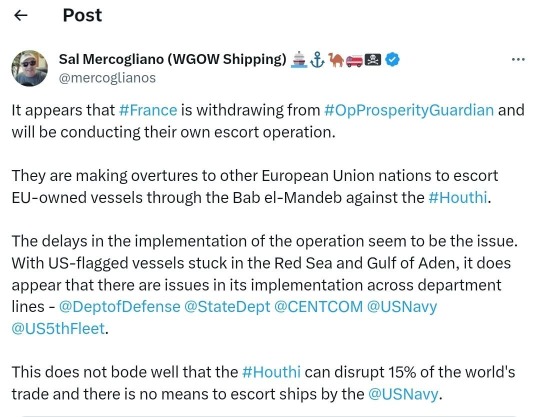


NATO/Zionist bootlickers: YEMEN STILL GONNA FAFO!!!
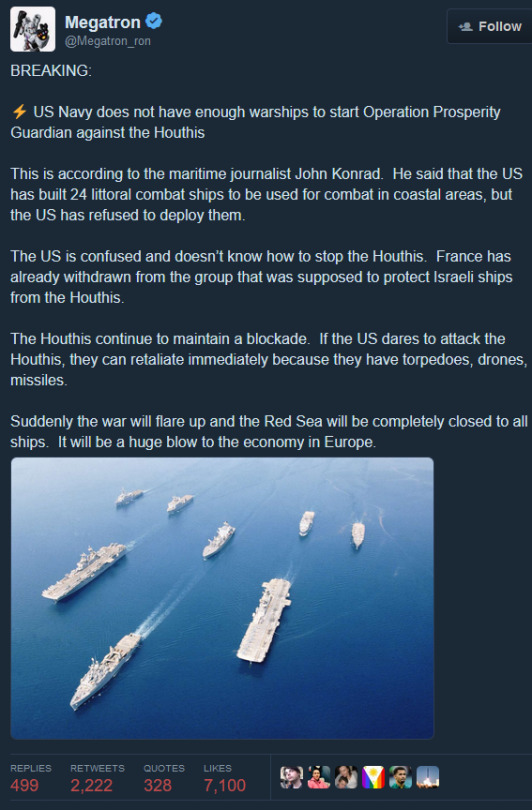
Coalition of the Unwilling, lmao.
What a shitshow. 💀
#current events#operation prosperity guardian#nato#houthis#yemen#yemen war#gaza#palestine#israel#red sea#free gaza#free palestine#naval warfare#aint 2001/2003 anymore lmao#how do you deploy a frigate w/no personnel btw#dw bahrain and seychelles came in clutch w/moral support
1K notes
·
View notes
Text


The Houthis have far more expensive missiles and drones, theyre not going to use them just yet because they have a strategy in place. They launch cheap drones at either US aircraft carriers or other ships at sea knowing that the US will be forced to use missiles worth millions just to stop one drone or cheap rocket.
Here's the thing about the American warships in the Gulf right now, they can't be reloaded at sea. Once they've run out of missiles, they will have to find a port, preferably one in an allied country, to get loaded again which can take weeks. There's a reason why the Houthis are not worried despite all the threats being sent towards them. The US Navy is in terrible shape and can no longer act as a deterrent.
#yemen#jerusalem#tel aviv#current events#palestine#free palestine#gaza#free gaza#news on gaza#palestine news#news update#war news#war on gaza#naval warfare
2K notes
·
View notes
Text

The Tesla Destroyer. The Electrical experimenter. March 1916. Magazine cover illustration.
Internet Archive
149 notes
·
View notes
Text
Could cannonballs sink a ship?
Well it's more a question of what era the ship was from. Because the earlier ones could certainly be sunk. But new research shows that cannon fire could have sunk at least one 19th century warship, a recently discovered ship that sank off the coast of Acre.

Cannonballs found among ship wreck
The ship's oak hull was unusually thick, leading researchers to wonder whether a cannonball could have penetrated it and caused it to sink. Experimental firing on replicas of wooden warships has been carried out in other countries, but due to the cost and complexity of such experiments, they are rare. They were generally just shooting demonstrations and scientific data was not always obtained.
It was therefore difficult to say whether the cannonballs found in the wreck off the coast of Acre would have been capable of sinking this particular ship, as it is usually a combination of several factors that caused a ship to sink - such as fire, severe damage and water ingress, especially in the case of the 19th century ships as they had a reinforced hull. It was assumed that the ball were more likely to get stuck there but would not cause the ship to sink or even blow holes in the hull. In most cases, it was damage to the crew and rigging that caused a ship to give up but not to sink. - But please do not confuse that ships were deliberately sunk after a battle because the repairs would consume too many resources and it would not be worth keeping the ship alive.
To answer this question, in 2009 the University of Haifa carried out further experiments on a model with a reinforced hull. Despite the strength of the hull, the cannonballs penetrated it even at the lowest speeds. The lower the speed, the more energy was absorbed to damage the hull and the more the wood splintered, which would have meant more damage to the ship's crew. But also damage to the ship itself and thus the possibility of letting water in around these holes. It can therefore be said that cannonballs would be capable of sinking a ship on their own.
72 notes
·
View notes
Text

Denarius minted by Sextus Pompeius (ca. 67-35 BCE), son of Pompey the Great and admiral during the wars of the Second Triumvirate. On the obverse, a galley with eagle, scepter, and trident, beneath a column topped by a statue of Neptune. On the reverse, the sea monster Scylla (who had a human head and torso but whose loins were variously described as dogs and serpents), wielding a rudder as a club.
Sextus Pompeius, a naval commander of considerable skill, was one of the principal threats to the uneasy alliance between Octavian and Antony in the years following Julius Caesar's assassination. Based on Sicily, which allowed him both to menace the Italian coast and to deprive Rome itself of much-needed Sicilian grain, Sextus gave Octavian much grief until his final defeat by Octavian's admiral M. Agrippa at Naulochus (36 BCE). The coin above is thought to have been minted between 42 and 40 and to celebrate a naval victory over Octavian (which may have been aided by a storm in the Strait of Messina). Of particular note is Sextus' attempt to stress his ties with his father, who had nominally been the Senate's champion against Caesar. The obverse styles Sextus both as MAGNUS, like his father, and PIUS, marking his filial devotion. His office as given on the reverse is PRAEF(ECTUS) CLAS(SIS) ET ORAE MARIT(IMAE) EX S(ENATUS) C(ONSULTO)--"Prefect of the fleet and the maritime coast by command of the Senate"--in token of his claim to represent Republican authority against the usurpation of the triumvirs.
Photo credit: Classical Numismatic Group, Inc. http://www.cngcoins.com
#classics#tagamemnon#Ancient Rome#Roman Republic#Roman Empire#history#ancient history#Roman history#Sextus Pompeius#naval warfare#ancient warfare#art#art history#ancient art#Roman art#Ancient Roman art#Roman Republican art#coins#ancient coins#Roman coins#Ancient Roman coins#denarius#metalwork#silver#silverwork#numismatics#ancient numismatics
129 notes
·
View notes
Note
Do we know anything about the historical context that allowed Venice to come up with something like the Arsenal? Most accounts kind of treat it as this de Novo idea to mass produce ships, but I feel like history never actually works like that, and Carthaginians were doing that 1,500 years earlier. Were there trends going on elsewhere in Europe and the Mediterranean world that contributed to this industrial breakthrough? Do we know anything about the specific administrators who had to plan this seeming quantum leap in production out? Did a bunch of folks immediately see what the Venetians were doing and copy it? If not, why?
I'm going to take a slightly broader take on this question: the assembly line is not an invention, it's a discovery. So it's not about who did it first, because you have lots of cases of independent discoveries happening in wildly disparate times and places.
I remember quite vividly a talk given by Professor Anthony Barbieri-Low when he first arrived at UCSB, where he argued that the assembly line was first discovered in China...during the Bronze Age. As early as the Shang and Zhou dynasties around 1000 BCE, we have evidence of assembly line techniques being used in the production of bronze and pottery, because the pieces were inscribed on the bottom with indications of which worker did which parts of the process and which quality inspector signed off on the piece as good enough for sale - so that if the thing broke, officials could figure out exactly who to blame for shoddy work.

So it's not that Venice was the first to ever adopt the idea of assembly line manufacture of ships, but rather that they did it more consistently and devoted more resources to it than anyone else, and iteratively improved on the techniques to get production times down to a single day per galley.
The Arsenal of Venice was an enormous complex, roughly 15% of Venice's landmass, surrounded by a two-mile long defensive wall, and employing some 16,000 people. In addition to standardized pre-fabricated parts, the Arsenal also emphasized division of labor with workshops devoted to producing everything a warship might need in-house - rope, rigging, masts, planking, sails, nails, guns, etc. Organizing these supply chains, what we might call vertical integration, was an incredible logistical feat in and of itself.
In terms of technology, the Arsenal pioneered frame-first (as opposed to hull-first) construction, a moving assembly line whereby galleys were floated down a canal to different stages of the production process, new forms of firearms, and new kinds of ships llike the galleass and galleon. Galileo was a major consultant to the Arsenal at the height of its power.
In addition to the technical advancements, all of this required a lot of money - roughly 10% of the Republic's entire budget - and what made Venice truly unique was its ability to devote those kind of resources on a regular basis at a time when even powerful empires like the Ottomans and the Spanish were still using the yo-yoing methods of medieval fleet construction.
#history#economic history#ancient history#renaissance history#arsenal of venice#galley#ships#medieval navy#royal navies#royal fleets#military history#naval warfare
65 notes
·
View notes
Text
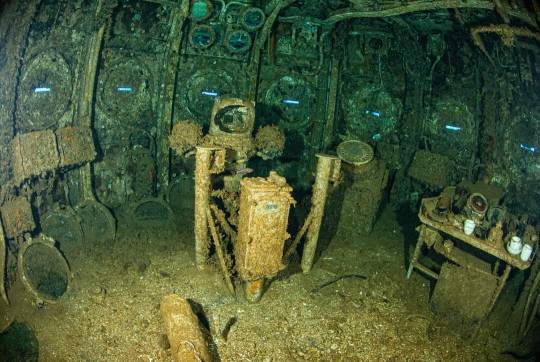
This is the wheehouse of the US aircraft carrier Saratoga at Bikini Atoll. The slits are battle covers over the porthole openings. The ship's wheel has rotted away, but everything else was still there when this photo was taken in the early 2000s.
13 notes
·
View notes
Text




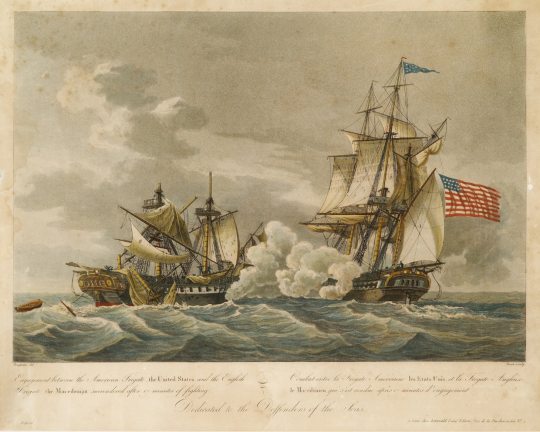
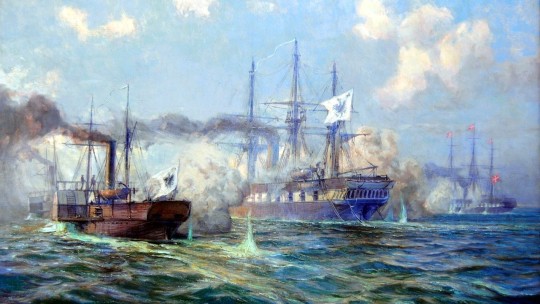
I keep watching & reading about naval warfare history and learning stuff I either had no idea about, or just didn't realize. And especially the YouTuber Dracinifel's videos tell the WHOLE story of the various engagements. Using the reports of officers, enlisted, eye witnesses, and any and all resources. You know, down to the minute, exactly what happened. And knowing about things like exactly how the crew took action when a vessel took his, or something unexpected came from the enemy or mother nature really teaches you a lot about command, tactics, damage control, ship capabilities, and the technology involved. Totally loving it!
#history#ww2 art#ww2#wwii#wwii art#warship#art#artwork#warbird#fighter#YouTuber#Dracinifel#naval warfare#naval history#naval art#military art#military history
23 notes
·
View notes
Note
From what I have been led to understand, up until the late 19th and early 20th century many sailors the American and most European navies didn’t know how to swim. Why is that and when did knowing how to swim become the Norm?
Yeah, that is true. For a while actually, swimming wasn't that commonplace for people that didn't live near large bodies of water. Plenty of people simply didn't have the free time to learn how to swim or teach their children. Factor in that a lot of military manpower was sorted via conscription, and there you have it, the vast majority of sailors didn't know how to swim. Chances were good that if you fell off your boat, you were in deep trouble anyway. And the Royal Navy specifically liked it that way - someone who could swim might desert and try to swim away when the going got rough.
As to when swimming became more common, that depended whether you were an officer or enlisted, but the middle 20th century, it rose among not just sailors, but among the civilian population as well. The rise in pools and other support facilities to actually teach swimming and the corresponding rise in leisure time saw swimming proficiency rise considerably.
Thanks for the question, Anon.
SomethingLikeALawyer, Hand of the King
16 notes
·
View notes
Text

The Battle of Texel 1673 by Jan de Quelery
#battle of texel#battle of kijkduin#age of sail#art#jan de quelery#netherlands#england#michiel de ruyter#prince rupert#france#dutch republic#dutch#english#french#fleets#navy#royal navy#warship#warships#naval battle#naval warfare#history#europe#european#third anglo dutch war#franco dutch war#north sea#texel#royal prince#kijkduin
41 notes
·
View notes
Text
Get fucked!
Make them eat shit!
Wait. Another one?!
They really do work fast.
I’m impressed.
#dougie rambles#news#political crap#naval warfare#ukraine#russian invasion of ukraine#fuck putin#get fucked#anti fascism#anti imperialism#black sea#black sea fleet#navy#russian navy#sea drones#missiles#crimea#neptune
9 notes
·
View notes
Text

#yemen#jerusalem#tel aviv#current events#palestine#free palestine#gaza#free gaza#news on gaza#palestine news#news update#war news#war on gaza#naval warfare
839 notes
·
View notes
Text
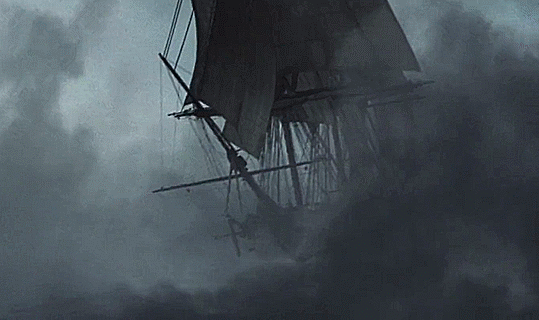

Acheron "Master and Commander"
#Master and Commander#Master and Commander: The Far Side of the World#Acheron#naval#nautical#naval warfare#sailing ship#cannon fire#flashing gif#GIF#my gifs#masterandcommanderedit#Hide and Queue
32 notes
·
View notes
Text
Atla worldbuilding thought: In Atla steam engines and ships with metal hull exist. Guns, on the other hand, do not exist.
There was a short time window in our history in which guns were ineffective against Ironclads. In one battle they tried the solution of ramming and it worked surprisingly well. But it didn't become common practice because gun technology caught up.
But in the world of Atla, without guns, naval battles would be ramming focussed.
#only in case of technological parity of cause#the water tribe ships cannot hope to win a contest with the fire nation by ramming#so they use hakoda's ambush tactics with seaweed mines#we don't see an earth kingdom fleet it is only implied that they are inferior#do we ever see an earth kingdom steam engine? or would they need earthbending powered cranks/pistons?#avatar the last airbender#naval warfare#worldbuilding#fire nation navy
9 notes
·
View notes
Text
A diver has discovered Europe’s oldest artillery cannon off the shores of Marstrand, Sweden. This 14th-century artifact, lost at sea, sheds light on a chapter of early artillery evolution and the turbulent history of maritime warfare.
21 notes
·
View notes